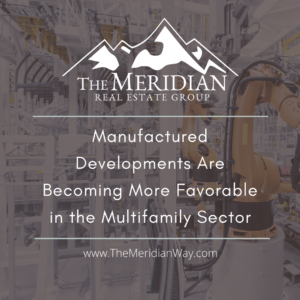 Thanks to high interest rates, supply-chain bottlenecks, and increased commodities cost for raw construction materials, prefabricated home construction is picking up speed as a substitute for traditional multifamily developments.
Thanks to high interest rates, supply-chain bottlenecks, and increased commodities cost for raw construction materials, prefabricated home construction is picking up speed as a substitute for traditional multifamily developments.
The prefabricated construction category includes modular units (which are homes built in a factory and later assembled on-site), and manufactured houses (which are also factory-assembled but are built to meet national HUD standards), and mobile homes. Against a backdrop of a national housing shortage and a turbulent economic landscape, traditional multifamily construction methods are getting sidelined in favor of factory-built homes. The U.S. Census Bureau is seeing a 31 percent growth in the industry from May of 2022 to May of 2020, and demand is only continuing to climb.
Because of the streamlined process that comes with building in a factory, the timeline of construction for a prefabricated home is much faster than ground-up construction, and therefore much less expensive. However, there are some disadvantages: because each building site is unique to its locale’s terrain, weather, and zoning regulations, standardizing factory construction methods to suit the destination for every building is a challenge. Then of course there’s the longstanding cultural stigma attached to factory-made homes for being “cheap,” which has prompted policymakers to create stringent zoning regulations that disallowed prefabricated developments from building in desirable neighborhoods, making it a less-than-stellar investment for multifamily landlords. Despite these headwinds, prefab construction seems to be gaining favor which may provide one more tool for developers looking to build more homes, faster.
Thank you to Propmodo for this article. To read more, click here!